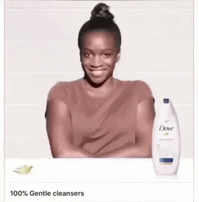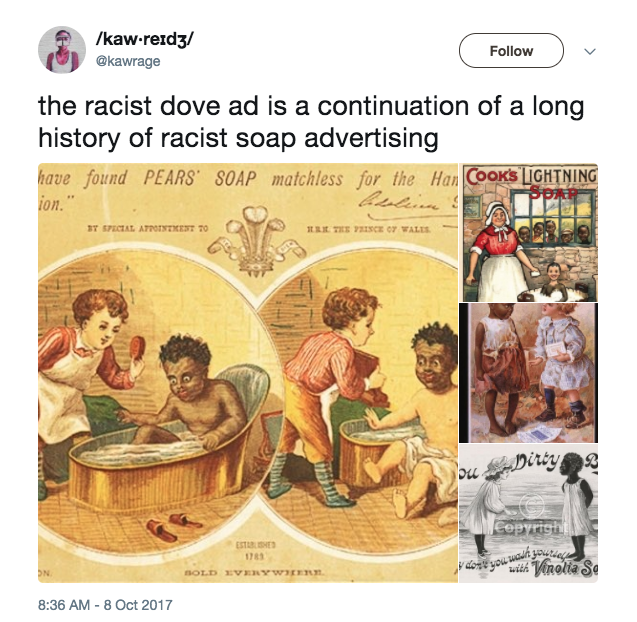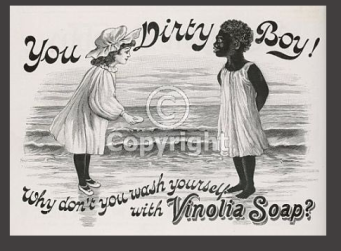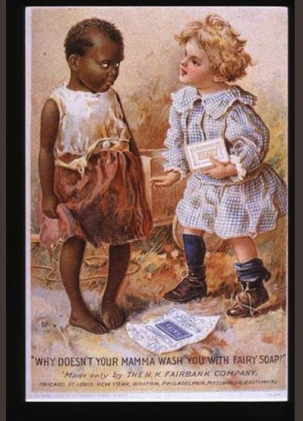By DE Harry
A Dove Facebook advertisement went viral on social media this past Sunday, Oct. 8, 2017. The GIF displayed three women taking off their skin-colored shirts, revealing the next underneath. The transition from the black woman to the white woman made headlines. The company received backlash from viewers of the advertisement labeling it racist for equating the use of the soap to turning a black woman (dirty) into a white woman (clean).

For some people, this ad reminded them of racist soap advertisement created by companies in the past. These ads portrayed black people as dirty and in need of cleansing.



After the advertisement was pulled, the company issued an apology on Facebook stating, “Dove is committed to representing the beauty of diversity. In an image we posted this week, we missed the mark in thoughtfully representing women of color and we deeply regret the offense that it has caused.”
Marissa Solan, a spokeswoman for Dove, said on Sunday that the GIF “was intended to convey that Dove Body Wash is for every woman and be a celebration of diversity, but we got it wrong and, as a result, offended many people.”
While the intent behind the advertisement was to be inclusive, the execution was poor. In this particular incident it is important to view the advertisement in it’s entirety before drawing a conclusion. In a country where racism and prejudice are very real issues we must be very careful not to dilute what it actually means to be racist.
It is also important to note that many people who posted about the ad were using a framing technique by only sharing the clip of the first two woman, failing to show the third woman, (who was also a woman of color) in order to fit their narrative.
Dominique Taylor, an alumni student of the University of Alabama working in PR did not believe the ad was racist but understood how it could be perceived as such.
“As a black woman I did not take offense to the advertisement after seeing it in its entirety, but it is clear that the ad was poorly executed. I see how it could be perceived as racist, being that there have been racist soap advertisements in the past. It may have been better to put the black woman in the middle.”
It’s true that situations like these often times require a simple fix, like changing the sequence of events, but who would know to make that call?
The ad was indeed poorly executed which raises questions about the people behind the advertisement. Who approved it? What can be done to avoid offensive media such as this advertisement?
One answer may be diversification. While it is unclear who specifically was behind the ad, we do know that having a diverse workforce can bring about differing perspectives. Diversity in media, whether that be print, broadcast news, entertainment news or advertising is imperative. Having a person in place to say “hey, this might be perceived in a certain way, maybe we should try a different approach” is always beneficial.
Hiring people with differing ages, ethnicities/races, genders, socioeconomic status’, disabilities and sexual preferences broadens the perspective of companies and newsrooms as a whole. Diversity plays a key role in being objective, inclusive and inoffensive. Not only does it offer various perspectives, it helps diminish stereotypes in the media that is being put out. Diversifying the workplace should always be an objective in media, for more reasons than one.
